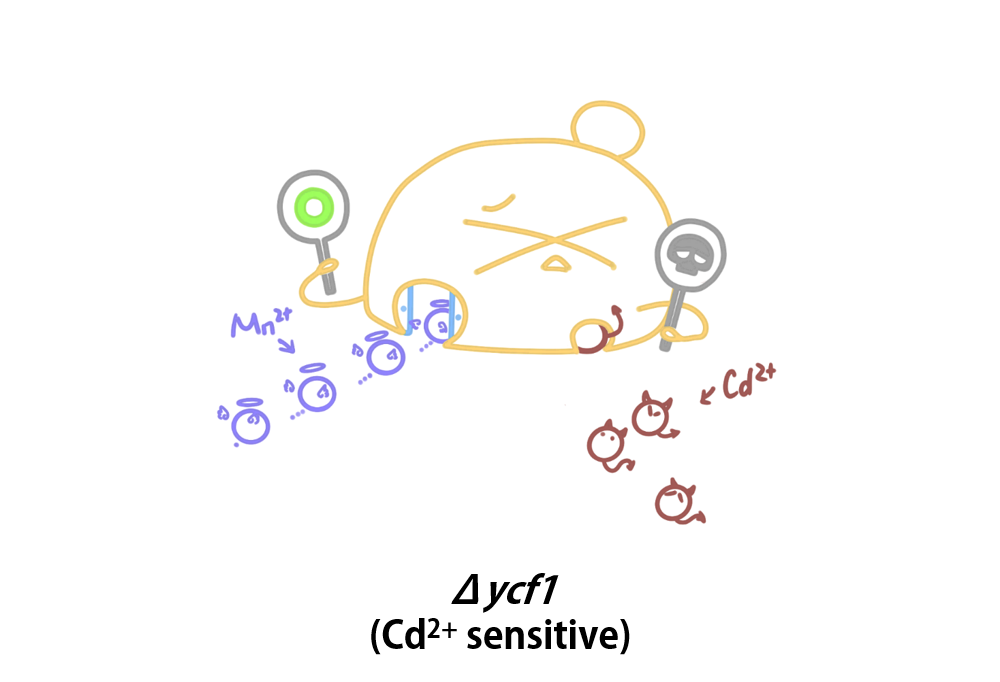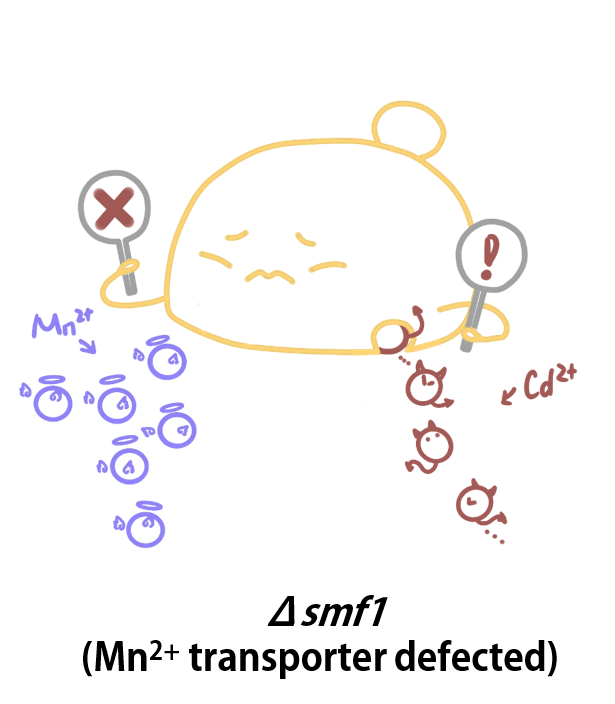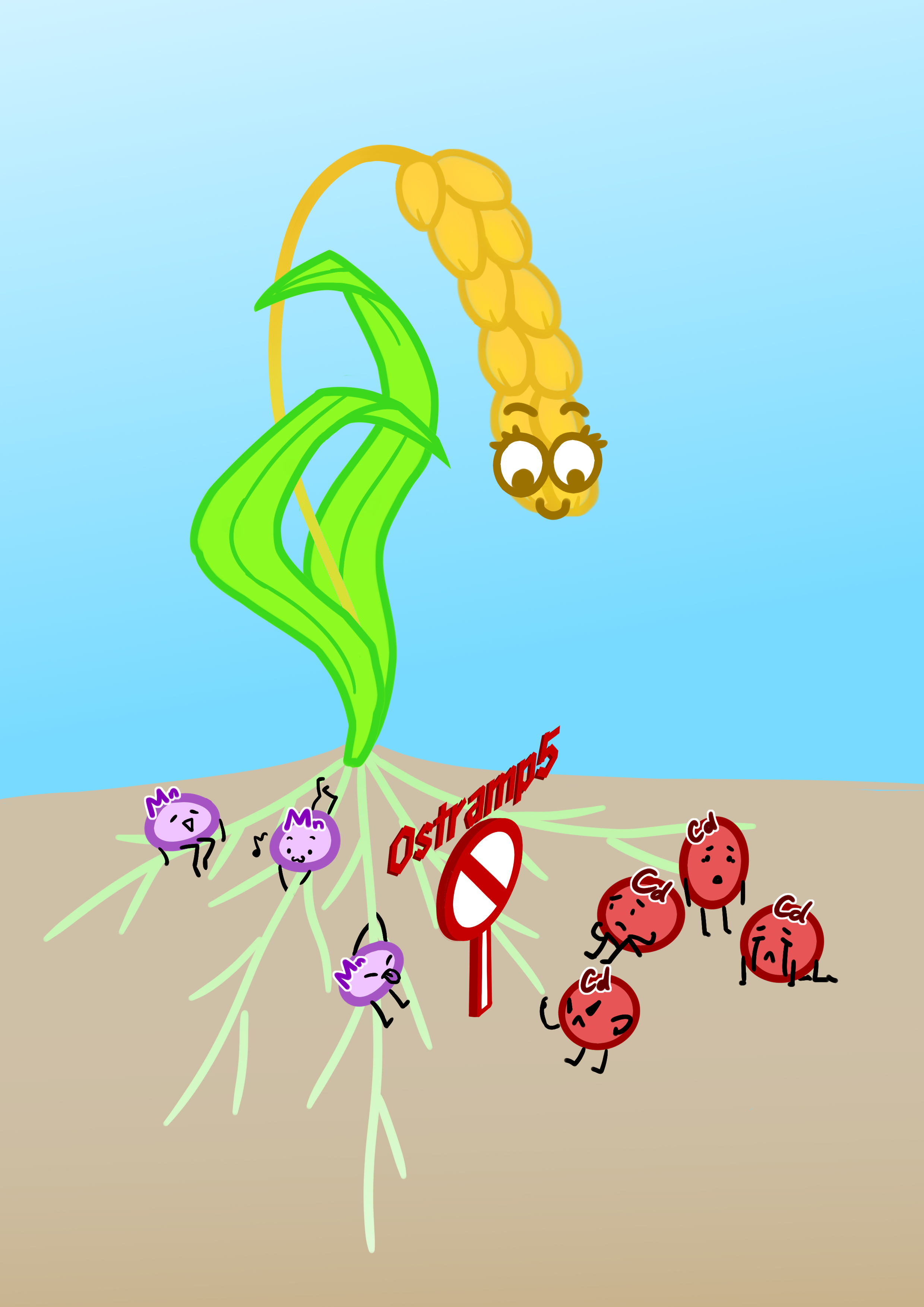We integrated error-prone PCR, the phenotype of different concentration yeast under cadmium stress into our directed evolution strategy for transporter protein,OsNramp5,that transports Mn2+ but not Cd2+.


In order to carry out the experiment smoothly, we conducted our study using the cadmium-sensitive strain (Δycf1) and the Mn2+ channel-defected strain(Δsmf1)that are not able to carry Mn2+normally through gene knockout. Δycf1 is difficult to grow normally under cadmium stress, and due to the lack of the ability to transport Mn2+in Δsmf1, their growth capacity is usually worse than wild type.


Recombinant plasmids were transformed into yeasts, and they could not grow on the solid SD-Ura media without this kind of plasmid. In the process of library construction, we got 260 positive transformants totally. Then, the single colony of each transformant was propagated in liquid SD-Ura media. Different densities of yeast were obtained by gradient dilution, to spot on SD-Ura solid media containing 2+. By doing so, the effect of different yeast concentration was further avoided on the final phenotypic observation.

The mutants with reduced transport of Cd2+ selected in primary screening were treated as new experimental materials. They were spotted on Mn2+-deficient SD-Ura media with the control group (Δsmf1-pFL61 and Δ smf1-HR). The Mn2+in media was specifically chelated by EGTA. As for the mutant strains, Δsmf1-pFL61 could not grow well in the media while Δsmf1-HR can, because the Δsmf1 strain cannot transport Mn 2+normally, they already had an additional Mn2+OsNramp5 transporter whose ability of transporting Cd2+ is decreased.

The problem that Cd2+enriched in rice do harm to humans is still unresolved, and our subject holds the promise of achieving the evolution of OsNramp5 into an ideal Mn2+-specific transporter protein and therefore solving the Cd2+ rice problem at the source. We hope that this study will accelerate the genetic breeding of low or even cadmium-free rice and promote the utilization of cadmium-contaminated land and agricultural economic development.
